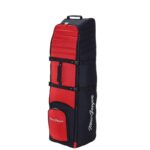London, a sprawling metropolis, is divided into 9 travel zones to streamline its public transportation system and determine fares. While zones 7, 8, and 9 cover areas just outside North West London, including places like Watford and Rickmansworth, the majority of your London explorations will likely fall within zones 1-6. Understanding these zones is key to cost-effective travel using the Tube, trains, buses, and trams.
Knowing your London Travel Zones is crucial because ticket prices for Travelcards and the fares deducted from Oyster or contactless cards are directly determined by the zones you travel through. This guide will break down everything you need to know about London travel zones to navigate the city like a pro.
Understanding London’s Zone System
Think of London’s zones as concentric rings radiating outwards from the city center. Zone 1 is the heart of London, encompassing iconic areas and major tourist attractions. Zone 2 forms a ring around Zone 1, Zone 3 encircles Zone 2, and so on, extending outwards to Zone 9.
London’s Travel Zones: A visual representation of London’s transport zones, showing how they radiate outwards from the city center and encompass different areas.
It’s important to note that bus travel operates differently. Regardless of zones, a Travelcard valid for zones 1-6 allows you to travel on buses across all of London. This makes buses a versatile and sometimes more affordable option for getting around.
For those new to the city, our comprehensive guide to London’s transport tickets provides further detail on ticket types and options.
Determining the Zones You Need
To effectively utilize London’s transport system, you first need to identify the zones relevant to your travel.
- Locate Your Accommodation: Find the nearest Underground or train station to your accommodation and determine its zone.
- Identify Your Destinations: Determine the zones of the stations you plan to visit. For sightseeing and shopping, you’ll likely be travelling to Zone 1, which covers Central London.
Once you know the zones you’ll be travelling between, you can choose the appropriate ticket or payment method:
Weekly and Monthly Travelcards
Travelcards offer unlimited travel within specific zones for a set period. When purchasing a weekly or monthly Travelcard, you select the zones you need to cover your journeys between your starting point and destinations.
- Example 1: Staying in Shepherd’s Bush (Zone 2) and visiting Central London (Zone 1): You’ll need a Zone 1-2 Travelcard.
- Example 2: Staying in Wimbledon (Zone 3) and commuting to Central London (Zone 1): A Zone 1-3 Travelcard is required.
Find Travelcard options here to choose the best fit for your travel needs.
Pay As You Go Oyster Cards
Oyster cards are a convenient way to pay as you travel. Simply load your Oyster card with credit and the fare will be deducted for each journey based on the zones you travel through. Alternatively, you can load enough credit to cover the daily cap, which provides unlimited travel within the zones for that day.
Learn more about using Oyster cards for pay-as-you-go travel.
Contactless Payments
Contactless payment offers a hassle-free way to travel in London. Similar to Oyster cards, the system automatically calculates the fare based on your journeys and zones traveled. Remember to always tap in and out at the start and end of each journey using the same contactless card to ensure accurate fare calculation. You don’t need to pre-calculate zones with contactless payment, simplifying your travel experience.
Explore the benefits of contactless payment for London transport.
Travelling Outside Your Travelcard Zones
Occasionally, you may need to travel beyond the zones covered by your weekly or monthly Travelcard. The process for paying for travel outside your zones differs slightly depending on whether your Travelcard is on an Oyster card or is a paper Travelcard.
Travelcards on Oyster Cards
If you have a Travelcard loaded onto your Oyster card and wish to travel outside your covered zones, you can use the pay-as-you-go balance on your Oyster card to cover the additional fare. The system will automatically calculate the fare from the last zone covered by your Travelcard to your destination zone.
- Example: With a Zone 1-2 Travelcard and a trip to Richmond in Zone 4, you’ll need sufficient pay-as-you-go credit on your Oyster card to cover the fare for Zones 3 and 4.
You can easily add credit to your Oyster card at ticket machines located in Tube stations. Check Oyster single fares to estimate the extra cost.
Paper Travelcards
If you have a paper Travelcard, you’ll need to purchase a separate extension ticket to cover travel outside your Travelcard zones. These extension tickets can be bought from ticket machines at Underground stations.
Stations Located in Multiple Zones
Some stations are situated on the boundary between two zones. These stations are indicated on the Tube map with a white border around their name. Ticket pricing for these stations is slightly nuanced.
- Example 1: Earl’s Court Station (Zone 1/2): Travelling from Earl’s Court to Zone 1 (Central London) incurs a Zone 1 single fare when using Oyster or contactless.
- Example 2: Earl’s Court to Heathrow (Zone 6): The fare is calculated from Zone 2 to Zone 6, not Zone 1-6.
- Example 3: ABBA Arena (Zone 2/3): From Zone 1, the fare is Zone 1-2. Travelling from outer London to the stadium without passing through Zone 1, the fare is to Zone 3.
Understanding these dual-zone stations can help you optimize your travel costs.
Saving Money on Travel from Zones 2-6 to Central London
A significant advantage of Travelcards is their validity on buses throughout London, regardless of zones. This presents a cost-saving strategy for those staying in Zones 2-6 and travelling to Zone 1.
Consider purchasing a weekly or monthly Travelcard excluding Zone 1 but including Zone 2. You can then travel by Tube or train to a Zone 2 station near Zone 1 and complete your journey into and around Central London by bus.
This strategy, applicable to weekly and monthly Travelcards, can lead to substantial savings:
- Zone 1-5 Weekly Travelcard: £73.00
- Zone 2-5 Weekly Travelcard: £42.50 (£30.50 saving per week)
- Zone 1-5 Monthly Travelcard: £280.40
- Zone 2-5 Monthly Travelcard: £163.20 (£111.70 saving per month)
Explore weekly and monthly Travelcards excluding Zone 1 to see potential savings.
Popular Destinations Outside Zone 1
London’s attractions extend far beyond Zone 1. Here are some popular destinations located in Zones 2-6, offering a glimpse into the diverse experiences London has to offer:
Tourist Attractions:
- Chiswick House – Zone 2 (Turnham Green)
- Cutty Sark – Zone 2
- Dulwich Picture Gallery – Zone 2
- Ham House – Zone 4
- Hampton Court Palace – Zone 6
- Kenwood House – Zone 2 (Archway)
- Kew Gardens – Zone 3
- National Maritime Museum – Zone 2
- Osterley House – Zone 4
- RAF Museum Hendon – Zone 4
- William Morris Gallery – Zone 3
Shopping Destinations:
- Westfield London (Shepherd’s Bush/White City) – Zone 2
- Westfield Stratford – Zone 2/3
- Camden Market – Zone 2
Sports and Music Venues:
- The O2 – Zone 2/3
- Twickenham Rugby Stadium – Zone 5
- Wembley Stadium – Zone 4
- Emirates Stadium – Zone 2
- ABBA Arena – Zone 2/3
Areas to Explore:
- Greenwich – Zone 2
- Richmond – Zone 4
- Wimbledon – Zone 3
Related Resources
Last updated: 23 February 2024

